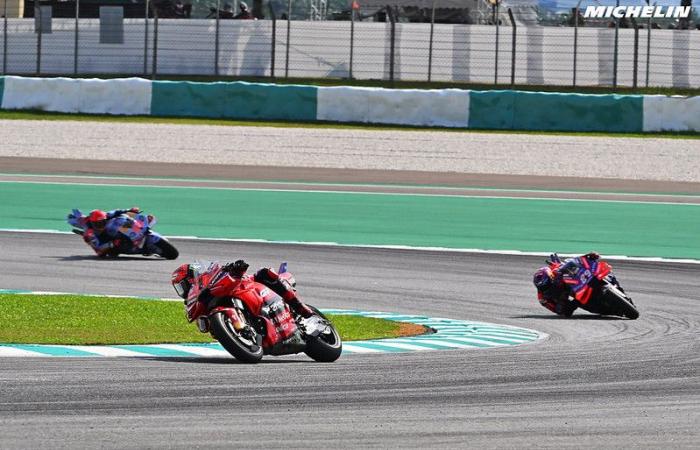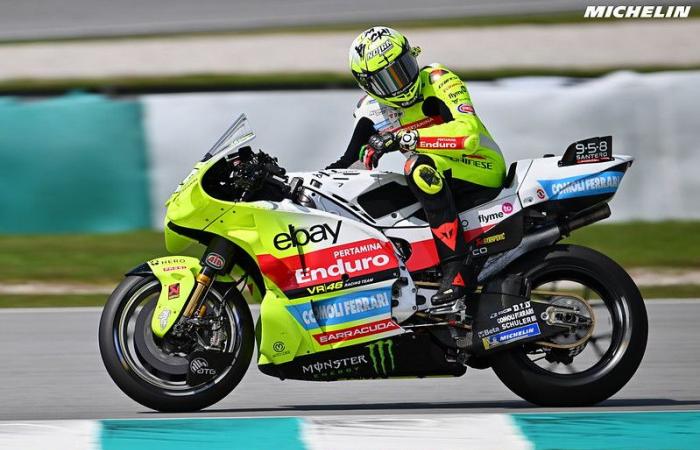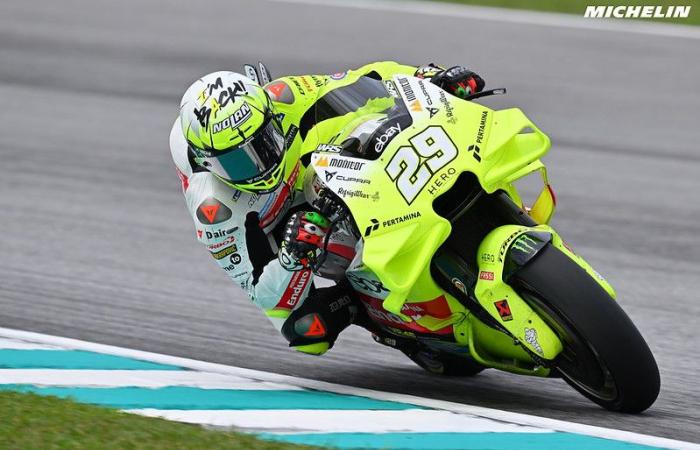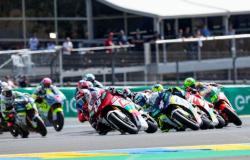It couldn't have escaped your notice, but Andrea Iannone was at the start of the Malaysian MotoGP Grand Prix, his first since the end of 2019. Well, his weekend was all in all okay given his lack of preparation. But it is not its results that interest us today; no, that's what he said at the end of the second day of racing. Having not touched MotoGP for five years, his point of view was quite relevant to discuss what has changed, and above all, what is specific to MotoGP compared to the Superbike championship in which he currently competes.
Aerodynamic load, the real enemy?
In order not to weigh down this paper, you can find what we are going to talk about today by clicking here.
To summarize, he spoke about the physical difficulty involved in riding such a tough MotoGP. At first glance, this statement is quite banal, because we know that our favorite sport requires perfect preparation of body and mind. But come to think of it, he may hold the key to bringing spectacle back to MotoGP. Let me explain.
We have to admit that we haven't had many close battles this year. Photo: Michelin Motorsport
Let's not lie to ourselves: the races for this 2024 season are quite flat. Most of the time, the winner (understand Martin or Bagnaia) escapes and largely wins the event. Okay, Ducati dominates, no other brand comes close to it in twenty Grands Prix. But still, it's strange, especially since we've gone, in a few years, from contested seasons to this.
What if aero was responsible for this lack of spectacle, or rather, for the appearance of this season in particular? I grant you, many of you hate these rather crude appendages, but the argument that came up most often was linked to the air disturbance caused by said appendages. The “dirty air” phenomenon is easy to understand: if you follow a motorcycle or a car that has a high aerodynamic load, you will have very little downforce in the corners, but a lot of suction in the lines. straight. The air in front of you is totally disturbed because it is further dispersed in all directions by the competitor you are following. Here is the theory that was repeated to me every time the lack of overtaking was mentioned, but this is easily refuted.
Martin and Bagnaia, in Malaysia, proved to us that it was perfectly possible to follow each other very closely, without losing grip, or seeing your tires heat up to such an extent that following in the footsteps of a competitor would be impossible. becomes unbearable (if you experience less fresh air, everything heats up). Certainly, this can happen in the event of a prolonged battle or in extreme conditions exactly like in Malaise. Marco Bezzecchi complained about it, for example, but the battle between the first two at the finish was quite long and proved to us that there could still be a spectacle. And then, there are plenty of examples of great battles that lasted a long time in recent years : the Sachsenring, Jerez and Buriram and 2023For example. To a lesser extent, Jerez 2024.
But the advanced aerodynamics of current machines could be responsible another phenomenon that I hadn't thought ofand which makes perfect sense when studying the profile of the two leaders of the general.
Risks and rewards
Andrea Iannone didn't talk so much about the difficulty of following a competitor. The Italian spoke more about the physical aspect represented by such developments. He says, for example, that everything is exhausting, that the motorcycles become as heavy as possible, especially when braking. Also, that you had to do everything possible to constantly generate support, otherwise you could fall.
But wait. Who is taking the most risks this year? Which drivers often fall when they are in a position to score big points, because they are the only ones constantly playing in front? Who are these men who, on this grid, never calculate anything, always go all out? Martin and Bagnaia. Finally, isn't the apparent difference in level between them and the rest of the grid explained in this way? Many think that they often fall when they are first or second because of their position, but isn't it because they attack more than everyone else at any point in the race that they fall? – and therefore, according to Iannone, tire more quickly, try to make the most of their aerodynamics – ? Basically, isn't the question taken in reverse?
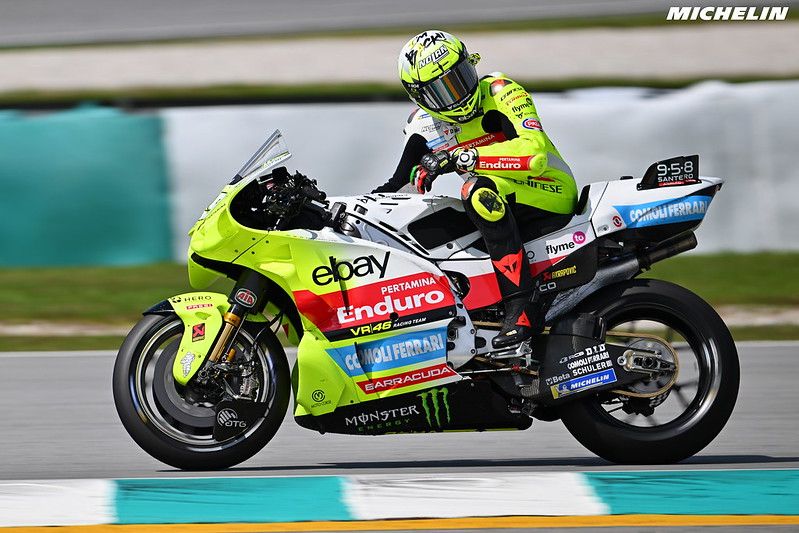
Iannone had a fairly discreet, humble weekend. He himself admitted not to give his all, because it hurt too much. Photo: Michelin Motorsport
I now think so, and it's a problem on two levels. Already, because aerodynamic escalation in MotoGP is intended to make this famous dirty air phenomenon appear for good. If this continues, the pilots will no longer be able to follow each other (which is not currently the case, I point out). Then, because the bikes are going faster and faster, and it will be even easier to get trapped because you don't attack enough. The heats would become a sort of “attack race”, a sequence of twenty-six qualifying laps'. Mind you, that’s kind of the case now. And the race must remain the race, with its own science.
Conclusion
I hope I was clearbut to summarize, Bagnaia and Martin are the best because they are the ones who apply the philosophy that the times require. We are in the era of attackers, we knew that, but isn't it the motorcycles that impose this more than the appearance of phenomena like Bastianini, Martin and Bagnaia? Motorcycles need to be pushed to the maximum to function in the best way, a bit like a virtuous circle, and the two – who also have similar qualities and an almost identical approach – are the ones who give the most to the handlebars.
This is a phenomenon to watch closely, which I will try to keep an eye on in 2025. In retrospectthis would explain many past events: for example, would Fabio Di Giannantonio not have “simply” increased his commitment to the handlebars at the end of 2023, totally freed because he was forced to do the feat? Wasn't that his key to unlocking performance, rather than linear progression or on more precise points? As a result, wouldn't trust become the most formidable weapon a pilot can possess? Are we not heading towards the disappearance of the science of racing, in favor of intrinsic speed? These are open questions, I don't have the answers to all of them.
I am very curious to know what you think of this reflection in the comments, hoping that it was clear enough from start to finish. As a reminder, this is only a reasoned opinion, and in no way the truth.
As a reminder, this article only reflects the thoughts of its author, and not of the entire editorial team.
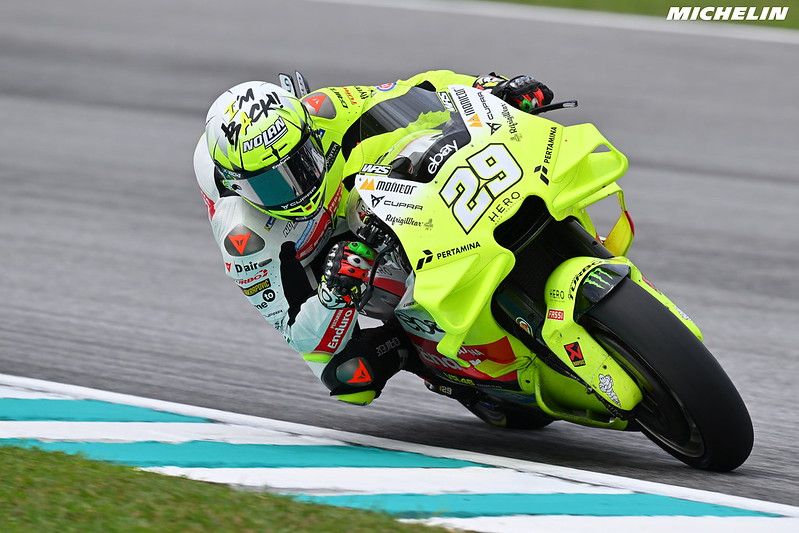
That said, I wouldn't want a second Superbike championship either, which isn't necessarily more fun, but for other reasons. Photo: Michelin Motorsport
Cover photo: Michelin Motorsport

